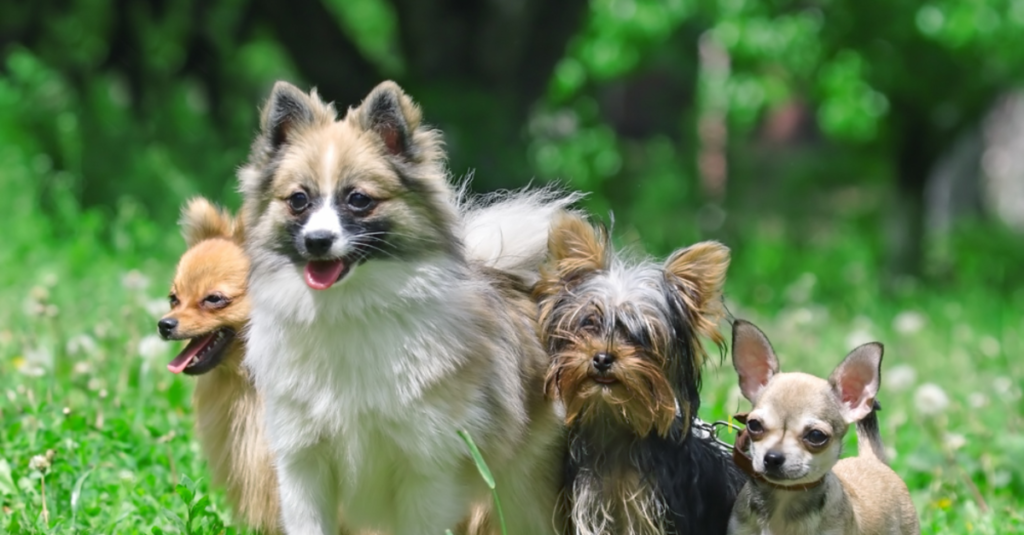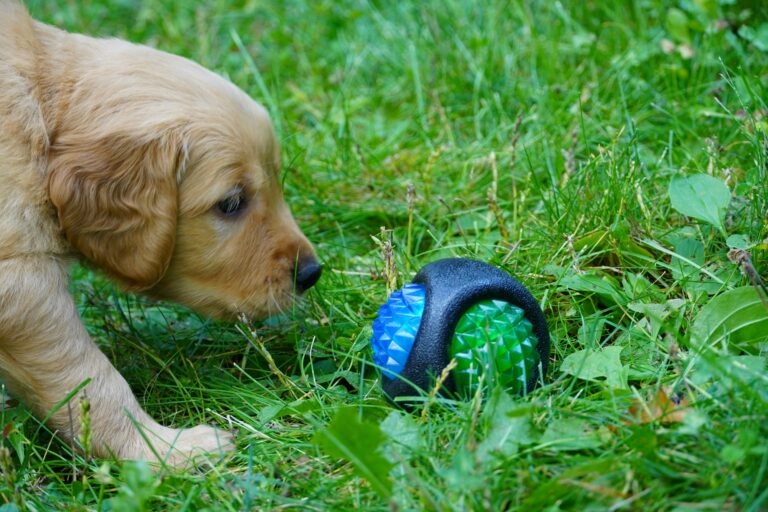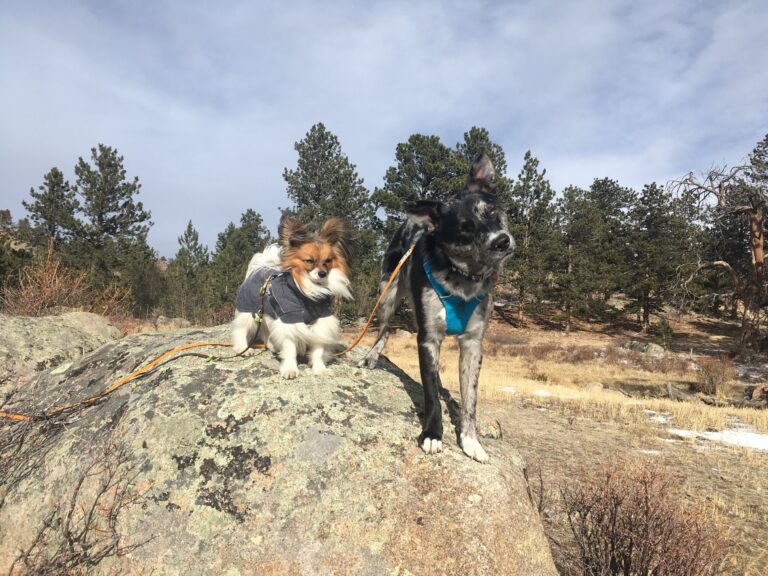In the complex world of canine intelligence, small breeds often surprise with their sharp wit and quick learning abilities. These pint-sized pups may be small in stature, but they are colossal when it comes to brains and the capacity to grasp new skills. In the forthcoming discussion, we will dive deep into understanding the art of training intelligent small breeds, putting to rest the myth that “bigger is better.”

Mastering advanced tricks for intelligent small breeds requires a fine balance between discipline, creativity, and patience. The training strategies can be entirely different from those used for larger breeds, mainly because these tiny furballs are driven by a different set of motivations. Hence, our focus will be on unveiling some of the most effective tricks and tips that can help you unlock your petite pup’s potential.
As the pet-parent of a small breed, one may wonder about the best ways to stimulate their dog’s intellect while keeping their size and personality in mind. Tailored specifically for small breeds, we will explore different training methods, games, and activities that are not only fun but also mentally stimulating. The goal is to provide an enriched environment that can effectively channelize their intelligence in the right direction.
In addition, we will touch upon the importance of understanding your dog’s unique personality and needs. Not all intelligent breeds learn at the same pace or respond to the same cues. Hence, the key to successful training lies in knowing your pet’s preferences, strengths, and weaknesses. This personalized approach goes a long way in fostering a positive learning experience for your four-legged friend.
Lastly, we will present real-life examples and success stories of intelligent small breeds, who have made their mark with their exceptional learning abilities. These stories serve as an inspiration, reminding us that with the right approach, training these clever canines can be a rewarding and fulfilling experience. So get ready to dive into a world where small is smart, as we unravel the secrets to mastering advanced tricks for intelligent small breeds.
The Importance of Mental Stimulation for Small Dogs
Mental stimulation is crucial for intelligent small breeds. These dogs thrive on learning and problem-solving. Without sufficient mental engagement, they may develop behavioral issues such as excessive barking or destructive chewing. Puzzle toys, scent games, and obedience challenges are great ways to keep their minds active and engaged.
Socialization and Confidence Building
While small breeds are often confident, they can also be easily intimidated by larger dogs or loud environments. Early and ongoing socialization helps them feel secure and builds trust. Introduce your small dog to new people, animals, and environments gradually. Use positive reinforcement to reward calm, curious behavior, and avoid forcing interactions.
Communication and Understanding Signals
Because of their sensitivity, it’s important to understand how small breeds communicate. Look for signs such as tail movement, ear positioning, and vocal cues to gauge their emotional state. Recognizing when your dog is overstimulated, nervous, or excited helps you adjust training sessions to be more effective and enjoyable.
Fun Advanced Tricks to Teach Small Breeds
Once basic commands are mastered, you can move on to more advanced tricks that challenge your dog’s intellect. Teaching your dog to ‘spin,’ ‘weave through legs,’ or ‘ring a bell to go outside’ can be rewarding. These tricks are ideal for small breeds because they don’t require intense physical effort but do require focus and consistency.
Integrating Training into Daily Life
Training should be a part of your dog’s daily routine, not just a special event. Short, frequent sessions throughout the day can reinforce commands and tricks. Use moments like feeding time, walks, or grooming to reinforce obedience and build your dog’s discipline.
Avoiding Common Training Mistakes
When training small breeds, common mistakes include being inconsistent, using harsh tones, or lacking patience. Due to their size and temperament, small dogs can quickly become fearful if they feel overwhelmed. Focus on positive reinforcement and maintain a calm demeanor to keep the learning environment safe and supportive.
The Role of Toys and Enrichment Activities
Interactive toys play a major role in cognitive development for small breeds. Toys that dispense treats, make noises, or require manipulation to solve can keep your pup entertained for hours. Rotate toys regularly to maintain interest and encourage exploration. DIY toys, such as muffin tin puzzles or treat-stuffed socks, are also great for variety.
Traveling with Smart Small Breeds
Small breeds are ideal travel companions due to their compact size and adaptability. However, intelligent dogs need mental engagement on the go too. Pack their favorite toys, bring a travel mat for training routines, and keep up with brief obedience sessions during breaks. Training your dog to feel comfortable in a car or carrier will make trips more enjoyable for both of you.
Incorporating Clicker Training Techniques
Clicker training is an effective method for teaching advanced tricks. The click sound acts as a precise marker that tells your dog exactly when they did something right. For small breeds that respond well to auditory cues, clicker training enhances learning speed and keeps sessions focused. Start with simple tasks and gradually build up to more complex behaviors.
Building a Lifelong Bond Through Training
Training isn’t just about teaching commands; it’s about building a relationship based on trust and communication. Spending quality time training your small dog strengthens your bond and improves mutual understanding. Dogs trained through positive engagement are typically more confident, obedient, and emotionally connected to their owners.
Training Techniques for Small Breeds
Training small breeds requires a different approach compared to larger breeds. Due to their size, they can be more sensitive to harsh training methods. Positive reinforcement techniques work best for these little dogs.

Consistency is Key
Being consistent is crucial when training small breeds. It’s important to keep the training sessions short and frequent, as small breeds can get bored easily. Consistent, positive reinforcement will help them understand what is expected of them.
Use of Training Tools
Training tools, such as clickers or treats, can be beneficial when training small breeds. They respond well to positive reinforcement, and these tools can help maintain their attention during training sessions.
Creating the Ideal Training Environment
The environment in which training takes place can significantly impact a small dog’s ability to learn. For intelligent small breeds, a quiet, distraction-free space helps focus their attention during the early stages of learning. As your dog progresses, introducing mild distractions—such as training in a park or with background noise—helps build reliability in real-world scenarios. Keep training spaces safe and comfortable, using familiar mats or areas your dog already associates with positive experiences.
Encouraging Independence Through Trick Training
Small breeds often become closely bonded to their owners, which can sometimes lead to dependency or separation anxiety. Teaching independent tricks—such as going to a designated spot, retrieving a toy, or searching for hidden treats—helps your dog build confidence when not directly interacting with you. These types of tricks foster self-reliance and are mentally enriching, particularly when incorporated into daily routines.
Tailoring Commands to Suit Small Breeds
Because of their size, small dogs may struggle with commands that involve physical tasks suited to larger dogs, like high jumps or guarding stances. Instead, focus on tailored commands that play to their agility, speed, or intelligence. Commands such as “spin,” “under,” “tunnel,” and “up” can be incorporated into agility or trick routines. These commands use their natural strengths and can be customized for games, obstacle courses, or performances.
Motivational Training: Finding the Right Reward
What motivates a small dog can vary significantly by breed and individual personality. Some small dogs are food-driven, while others respond better to toys or verbal praise. Identifying your dog’s top motivator is essential for maintaining focus and enthusiasm during sessions. High-value treats such as freeze-dried meat or cheese work well for teaching new behaviors. For toy-driven dogs, using a favorite squeaky toy or ball as a reward can be equally effective.
Monitoring Progress and Setting Realistic Goals
Tracking your dog’s progress ensures training is moving in the right direction. Set clear, incremental goals for each new trick or command. For instance, if teaching a “roll over,” start by rewarding your dog for lying down, then for turning slightly, and so on. Celebrate small victories along the way. Keep a simple log or training journal to record what works, what doesn’t, and how quickly your dog is advancing.
Managing Training Plateaus
Even intelligent small breeds can hit a training plateau, where progress stalls. When this happens, revisit earlier steps to reinforce foundational behaviors. Sometimes the plateau is a result of overstimulation or confusion, so simplifying the training task or adding more breaks can help. Varying the training environment, switching up rewards, or adding a new game can also reignite enthusiasm and motivation.
Using Verbal Cues and Hand Signals Together
Combining verbal cues with hand signals enhances communication, especially for small dogs that are visually attentive. For example, pairing the word “sit” with a clear hand motion makes it easier for your dog to understand and respond consistently. This dual-cue approach is also beneficial if your dog becomes hard of hearing later in life. Begin with both cues together, then gradually test each cue independently to build fluency.
Encouraging Problem-Solving with Interactive Tasks
Advanced training for small breeds should incorporate cognitive challenges. Problem-solving tasks like opening a cabinet, pressing a button, or identifying objects by name stimulate brain development. Use trial-and-error learning by offering puzzles that your dog has to work through to achieve a reward. These tasks mimic natural foraging behavior and are especially effective for breeds like Papillons, Pomeranians, and Miniature Schnauzers, known for their intellectual capabilities.
Training in Multi-Dog Households
If you live in a multi-dog household, managing training time for each dog can be tricky. Small dogs may be overshadowed by larger or more dominant personalities. Create individual training sessions for your small dog to ensure focused attention and personalized instruction. Use group sessions later to test how well your small dog can respond in a more social environment. This approach helps with generalization and teaches your dog to listen amidst distractions.
Maintaining Mental Engagement as Dogs Age
Just like humans, dogs need ongoing mental stimulation throughout their lives. For small breeds, who often live longer than larger breeds, lifelong learning is critical. Introduce new tricks or variations of existing ones to keep training fresh. For senior dogs, adapt commands and games to accommodate physical limitations while still engaging their minds. Teaching your older dog to differentiate between toys or respond to gentle hand signals maintains cognitive sharpness and strengthens your bond.nce. Remember, the goal is to make training enjoyable for both you and your dog.
Health and Wellness Tips for Small Breeds
Maintaining the health and wellness of small breeds is important. They have unique health concerns and require a specialized diet and exercise regimen.
Nutrition
Small breeds require a diet that is high in protein and low in fillers. They also benefit from small, frequent meals throughout the day to maintain their energy levels.
Exercise
While small breeds may not require as much exercise as larger breeds, they still need regular physical activity. This can include short walks, playtime in the yard, or indoor games.
Regular Vet Checkups
Regular vet checkups are crucial for maintaining the health of small breeds. They can help identify potential health issues early and provide preventative care.
In conclusion, small breeds are intelligent, adaptable, and full of personality. With the right training techniques and health care, they can learn advanced tricks and lead healthy, happy lives.
Conclusion
In conclusion, mastering advanced tricks for intelligent small breeds is not a formidable task. It requires persistence, patience, and a positive attitude. The ability of these breeds to learn and execute tricks lies in their intelligence and adaptability. Training them is not only an exercise in teaching new skills but also an opportunity to build a strong bond with your pet.
It’s essential to remember, though, that every dog is unique. What works for one may not work for another. So, be adaptable in your approach. Incorporate fun and play into the training sessions, keeping them engaging and enjoyable for your pet. Use positive reinforcement, like treats or praises, to encourage your pet to learn new tricks.
Equally important is to ensure that your pet’s physical and mental health is taken care of. Regular exercise, a balanced diet, and routine check-ups with the vet are crucial. Mental stimulation can be provided through puzzle toys, interactive games, and learning new tricks.
Overall, training intelligent small breeds can be a fulfilling experience, full of shared fun, laughter, and bonding. So, roll up your sleeves, keep the treats ready, and embark on this exciting journey. Happy training!
🐾🎉🐶



